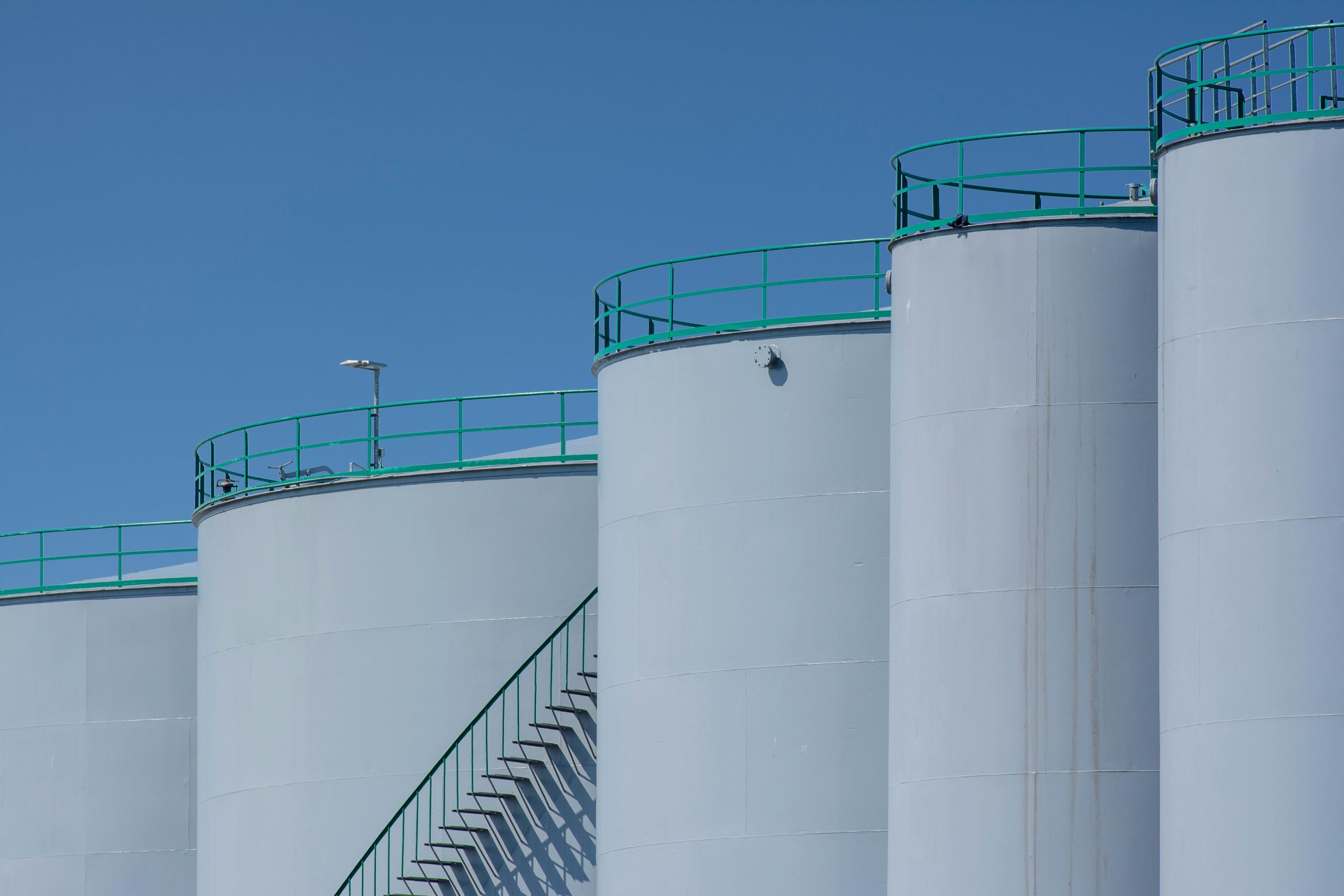Hydrogen’s high energy per mass makes it a promising fuel, but storing it safely and efficiently remains a complex challenge. Advances in compression, liquefaction, and solid-state materials aim to boost capacity while meeting strict safety and cost targets. Understanding these evolving storage methods is essential to unlocking hydrogen’s full potential for transportation and energy applications.
Meeting Hydrogen Storage Needs: Current Methods, Challenges, and Industry Requirements
When industries, transportation, and the renewable energy sector rely on hydrogen storage solutions, they encounter a diverse landscape of technologies and challenges. Hydrogen is lauded for its exceptionally high energy per mass, but its low energy per volume makes storage a persistent difficulty, especially for vehicles aiming for driving ranges comparable to gasoline counterparts. Light-duty vehicle applications, for example, require between 5 and 13 kilograms of stored hydrogen, with system energy and volumetric density targets that push the limits of current engineering.
Also to read : How can UK businesses ensure diversity and inclusion in the workplace?
Department of Energy targets help guide innovation by stipulating not only gravimetric and volumetric energy density thresholds but also clear cost targets like $333 per kilogram stored by 2025. Meanwhile, real-world systems must address more than just numbers; safety and system efficiency are paramount. Liquid, compressed gas, and material-based storage each offer trade-offs. High-pressure tanks allow rapid refueling but demand robust safety measures, while cryogenic tanks can pack in more hydrogen at the cost of complexity and insulation needs.
For scalable integration with renewables and industry, storage solutions must minimize footprint, maximize cycle life, and remain cost-effective. The unpredictable behavior of hydrogen including its flammability and potential material embrittlement—makes engineered safety at every phase non-negotiable.
Also read : Navigating Market Shifts in the UK: What Are the Latest Trends to Watch?
Overview of Hydrogen Storage Technologies and Methods
Hydrogen storage technologies are designed to manage the unique properties of hydrogen, including its low ambient temperature density and high gravimetric energy density. The most common types of hydrogen storage are compressed hydrogen storage, liquid hydrogen storage, chemical hydrogen storage, solid-state hydrogen storage methods, and geological hydrogen storage.
Compressed Hydrogen Storage
Compressed hydrogen storage utilizes high-pressure tanks for hydrogen to increase energy density in hydrogen storage. These tanks typically operate at pressures ranging from 350 to 700 bar for hydrogen storage for vehicles and stationary hydrogen storage systems. Innovations in hydrogen containment solutions focus on advanced composite materials and robust safety measures for hydrogen storage. High-pressure hydrogen compression technology presents challenges in storage system design and cost analysis, with regulators emphasizing hydrogen storage regulations, pressure vessel standards, and continuous monitoring and diagnostics in storage systems.
Liquid Hydrogen Storage
Liquid hydrogen storage uses cryogenic hydrogen storage techniques, chilling hydrogen to −253°C. This approach boosts storage capacity optimization by reducing hydrogen’s volume, allowing for improved hydrogen storage and transportation. However, it requires highly insulated hydrogen storage tank materials and rigorous thermal management in hydrogen storage to prevent evaporation and maintain efficiency.
Solid-State, Chemical, and Geological Methods
Solid-state hydrogen storage employs metal hydride storage systems, where hydrogen is absorbed or adsorbed into advanced materials for hydrogen storage. Chemical hydrogen storage uses ammonia and other hydrogen carrier materials, enabling reversible hydrogen storage cycles for grid balancing and renewable energy integration. Geological hydrogen storage, such as using underground salt caverns, enables large-scale hydrogen storage infrastructure supporting long-term hydrogen storage solutions with enhanced safety protocols and minimal surface footprint.
Comparative Performance: Advantages, Challenges, and Trade-Offs
Hydrogen storage materials form the backbone of modern storage solutions. These include compressed hydrogen storage, liquid hydrogen storage, and advanced solid-state hydrogen storage methods using hydrogen carrier materials. Each method focuses on achieving optimal energy density in hydrogen storage, which is critical for transport and grid-scale hydrogen storage for renewable energy integration.
Gravimetric energy density refers to energy per unit mass. Hydrogen outperforms most fuels (120 MJ/kg), yet volumetric energy density—energy per unit volume—remains a challenge. For example, liquid hydrogen storage achieves about 8 MJ/L, lower than gasoline’s 32 MJ/L, explaining the large volumes required in hydrogen fuel storage innovations. Compressed hydrogen storage offers up to 700 bar pressures in high-pressure tanks for hydrogen, but this impacts vehicle design and operational safety.
When considering hydrogen storage performance metrics, infrastructure scalability and application priorities play a significant role. Ammonia and solid hydrogen carriers increase storage capacity and facilitate hydrogen transportation, but chemical conversion for release lags in efficiency. Advanced materials for hydrogen storage, like metal hydrides or liquid organic hydrogen carriers, continually improve hydrogen absorption and release, allowing more flexible applications across power generation, mobility, and industry.
Storage choices require careful evaluation of hydrogen storage system design, safety protocols, and trade-offs between system weight, scalability, and long-term cost in achieving energy transition goals.
Safety Protocols and System Design for Hydrogen Storage
Safety measures for hydrogen storage begin with controlling flammability and mitigating hydrogen embrittlement issues. Hydrogen’s flammable range in air and the risk of invisible flames necessitate robust hydrogen storage safety protocols, including continuous leak detection and rapid ventilation systems. Hydrogen containment solutions utilize high-integrity seals and advanced monitoring and diagnostics in storage systems to swiftly identify hydrogen leakage prevention needs.
Material choice is central. For hydrogen storage tank materials, metals like advanced steels and composite materials are favored, designed to resist both high-pressure cycles and hydrogen embrittlement issues. Pressure vessel standards require that tanks withstand daily stress, with mandatory hydrogen storage regulation compliance matching the latest safety codes for stationary hydrogen storage systems and on-board hydrogen storage technology alike.
Innovative hydrogen storage system design relies on layered protections: sensor-equipped enclosures, strict pressure and temperature controls, and global interlocked controls. Real-time monitoring and diagnostics in storage systems allow operators early intervention, addressing any irregularities before hydrogen embrittlement or hydrogen leakage prevention failures compromise safety.
In large-scale hydrogen storage infrastructure, adherence to local and international hydrogen storage regulations secures operational integrity. Regular hydrogen storage safety protocol audits, technician training, and certification, as well as robust hydrogen containment solutions, reinforce trust and ensure continued system resilience.
Innovations and Recent Developments in Hydrogen Storage
Breakthrough hydrogen storage technologies are transforming how hydrogen is managed, focusing especially on optimizing storage capacity, safety, and lifecycle. Among the headline advances, metal hydride storage systems are gaining ground for delivering higher hydrogen density at safer pressures than conventional high-pressure tanks for hydrogen. These advanced materials for hydrogen storage allow for compact and modular scalable systems that can more easily integrate into transportation, industrial, and grid-scale solutions, supporting a broader hydrogen storage and transportation infrastructure.
Compressed hydrogen storage remains widely used, relying on robust high-pressure tanks for hydrogen to reduce volume and support automotive and stationary hydrogen storage systems. However, research into innovative hydrogen containment solutions and new tank designs is addressing challenges like hydrogen embrittlement and hydrogen leakage prevention, ensuring ongoing improvements in hydrogen storage safety protocols and lifecycle.
Experimental data from pilot projects—such as the Delphy hydrogen storage demonstrator by Vallourec—offer valuable insights into hydrogen storage system design, operational scalability, and digital monitoring and diagnostics in storage systems. These real-world trials play a key role in validating technical targets and shaping hydrogen storage cost analysis, helping evaluate which breakthrough hydrogen storage technologies will best support future energy demands.
Market Applications, Use Cases, and Future Outlook
Hydrogen storage for vehicles is a linchpin in zero-emission fuel storage options, achieving driving ranges over 300 miles by utilizing on-board hydrogen storage technology. High-pressure tanks for hydrogen, commonly at 350–700 bar, are standard for compressed hydrogen storage yet present challenges around volumetric efficiency and passenger space. Hydrogen storage technologies such as metal hydride storage systems and cryogenic hydrogen storage are being developed to optimize hydrogen storage capacity and address safety, cost, and design limitations.
Stationary hydrogen storage systems support hydrogen storage for renewable energy integration by absorbing surplus generation and balancing grids during intermittent wind and solar cycles. Applications span utility-scale buffering, industrial backup, and off-grid resilience, with large-scale hydrogen storage infrastructure instrumental for grid balancing and smart building energy management.
Recent hydrogen storage market trends highlight innovation in hydrogen containment solutions, from solid-state hydrogen storage methods to hydrogen carrier materials like ammonia. Policy efforts and project funding are accelerating deployment and research.
Hydrogen storage infrastructure development also focuses on hydrogen refueling station storage and lifecycle management. Advances in hydrogen storage system design and safety measures for hydrogen storage enhance system durability and user confidence, expanding the role of hydrogen in decarbonizing transport, energy, and industry by 2025 and beyond.







